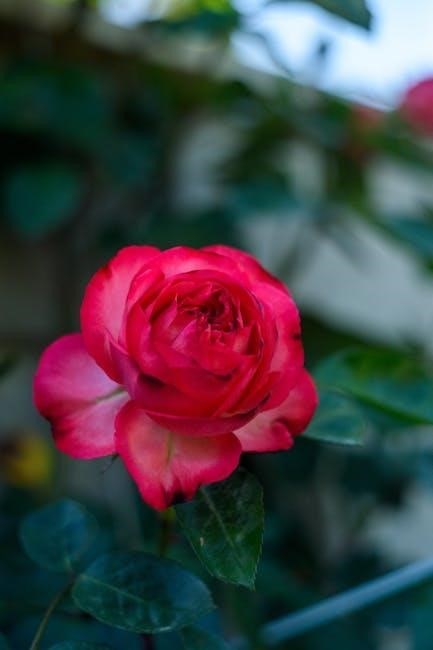felt tutorial flower
Felt flowers are a versatile craft, ideal for bouquets, clothes, and decor. Tutorials teach you to make stunning blooms with simple materials, suitable for all skill levels.
Materials and Supplies Needed for Felt Flowers
High-quality felt fabric, sharp scissors, hot glue gun, embroidery floss, floral tape, and wire cutters are essential. Optional: felting needles, Cricut Maker, or flower templates.
Felt Fabric Types
High-quality wool felt is ideal for intricate details, offering a soft, natural texture. Synthetic felt is durable and cost-effective, perfect for vibrant colors. Blended felt combines wool and synthetic fibers for balance. Felted wool fabric adds a rustic charm. Choose thicknesses based on desired petal stiffness; thicker felts hold shapes well, while thinner felts are easier to shape. Pre-cut felt sheets or rolls are convenient. For a professional finish, opt for high-density wool felt. These options ensure versatility and realism in your flower creations.
Tools and Accessories
To create felt flowers, essential tools include sharp scissors, glue, and a needle. A hot glue gun speeds up assembly. Optional tools like a Cricut Maker or felting needles enhance precision. Stems, floral tape, and artificial leaves add realism. Beads or pearls can serve as centers. Green wire stems provide stability. Floral tape secures stems and leaves. Tweezers help shape small petals. A sewing machine is handy for intricate stitching. Templates or patterns guide cutting. These tools and accessories ensure professional-looking results, making your felt flowers durable and visually appealing for various projects.
Basic Techniques for Making Felt Flowers
Mastering basic techniques like rolling, fringing, and layering petals is key to creating realistic felt flowers. These methods form the foundation for crafting various flower types;
Rolled Felt Flowers
Rolled felt flowers are a popular and easy-to-make design. Start by cutting a long, narrow strip of felt, typically around 1-2 inches wide. Fold the strip lengthwise and roll it tightly to form the flower’s center. Secure with a dab of glue or a few stitches. The width of the strip determines the flower’s size. For a fuller bloom, use a wider strip. This technique creates a realistic, layered petal effect. Tools like scissors and a hot glue gun are essential. Perfect for beginners, rolled flowers are versatile and can be customized with embellishments or stems.
Fringed Felt Flowers
Fringed felt flowers are a charming and textured design. To create them, cut a long strip of felt and fringe the edges by making small, evenly spaced cuts. Roll the strip tightly to form the flower’s center, securing it with glue or stitches. The fringed edges create a delicate, layered petal effect. This technique works well with wool or thick felt for a more defined fringe. Use scissors and a glue gun for assembly. Fringed flowers add a unique, rustic touch to bouquets, wreaths, or DIY projects. Perfect for crafting realistic, eye-catching blooms.
Layered Petal Technique
The layered petal technique creates realistic, dimensional flowers. Cut multiple petal shapes from felt, varying sizes for depth. Stack and glue petals, starting small at the center, expanding outward. Use a hot glue gun for secure bonding. For a natural look, gently shape each petal before layering. This method mimics real blooms like peonies or roses. Add details like stamens or leaves for authenticity. Ideal for crafting intricate designs, the layered petal technique offers endless customization for unique floral creations; Perfect for experienced crafters seeking detailed, lifelike results.
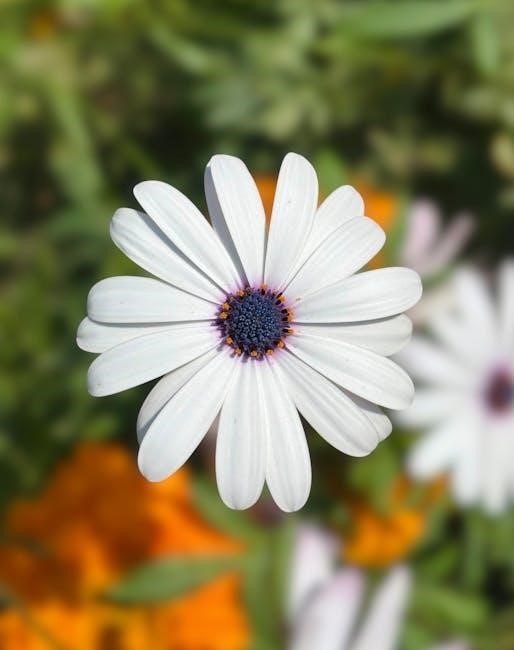
Step-by-Step Tutorials for Specific Felt Flowers
Learn to craft beautiful, realistic flowers like roses, daisies, and hydrangeas with detailed guides. Each tutorial offers step-by-step instructions for creating stunning blooms from felt fabric.

How to Make Felt Roses
To create realistic felt roses, start by cutting out petal shapes from high-quality felt fabric. Roll a petal tightly to form the center bud. Gradually add layers, securing each with a needle and thread. For a natural look, shape petals as you go. Use scissors to trim excess felt. To enhance realism, add shading with fabric paint or markers. Attach a stem and leaves for a finished look. This technique works beautifully for brooches, bouquets, or hair accessories. With practice, you can achieve stunning, lifelike roses perfect for any craft project.
Creating Felt Daisies
Felt daisies are charming and easy to craft. Begin by cutting petal shapes from felt fabric. Layer the petals around a central circle, securing with thread. Shape each petal for a natural look. Use contrasting felt for the center to mimic a real daisy. Add stems and leaves for a finished appearance. These flowers are perfect for embellishing clothing, accessories, or home decor. With simple tools and steps, you can create vibrant, long-lasting daisies that add a touch of handmade charm to any project.
Felt Hydrangea Tutorial
Learn to craft realistic felt hydrangeas with this step-by-step guide. Begin by cutting numerous small, rounded petal shapes from felt fabric. Layer and stack the petals tightly to mimic the dense clusters of real hydrangeas. Secure the layers with a central bead or stitch. Shape the petals gently for a natural look. Attach a stem and add green felt leaves for authenticity. These flowers are perfect for bouquets, wreaths, or home decor. With patience and simple tools, you can create stunning, long-lasting hydrangeas that capture the beauty of the real blooms.
Making Felt Peonies
Creating felt peonies involves layering petal shapes to achieve their signature fullness. Cut multiple petal templates, ranging from small to large, and layer them, securing with stitches or hot glue. Shape each petal slightly to mimic natural curves. Roll the inner petals tightly and wrap outer layers around them. Add a central bead for detail. Finish by attaching a stem and leaves. Felt peonies are stunning in bouquets or as decorative accents, offering a realistic and durable alternative to fresh flowers. With patience, you can craft blooms that captivate with their texture and beauty.
Assembly and Finishing Touches
Finishing touches involve securely attaching petals, shaping blooms, and adding stems. This step ensures durability and enhances the natural appearance of your handmade felt flowers for any project.
Adding Stems and Leaves
Adding Stems and Leaves
To complete your felt flowers, attach stems using floral tape or wire wraps for stability. Leaves can be sewn or glued behind the bloom. For a realistic look, shape leaves gently and secure them with fine stitches or hot glue. Ensure stems are sturdy enough to hold the flower’s weight, especially for bouquets or arrangements. This step enhances the natural appearance and prepares your flowers for use in various projects, like wreaths or clothing embellishments.
Securing Petals and Final Shaping
Securing Petals and Final Shaping
Once petals are assembled, secure them with a dab of hot glue or small stitches at the base. Gently shape each petal to create a natural, lifelike appearance. For rolled flowers, ensure the center is tightly secured to maintain form. Adjust layers to achieve symmetry, and fluff petals for volume. Finally, trim any excess fabric or glue strings. This step ensures your felt flowers look polished and professional, ready for use in bouquets, decorations, or accessories. Proper shaping and securing enhance durability and visual appeal.
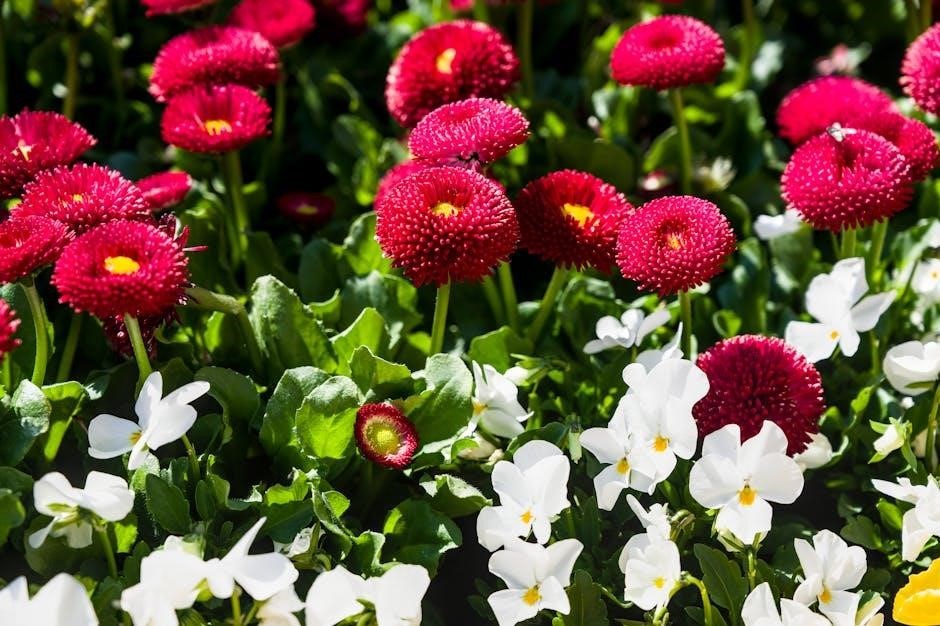
Customizing Your Felt Flowers
Personalize your felt flowers with unique touches like dyeing, painting, or embroidery. Add texture by layering petals or blending colors. Incorporate beads, sequins, or ribbons for extra flair, making each bloom truly distinctive.
Adding Color and Texture
Adding Color and Texture
Enhance your felt flowers by experimenting with color and texture for a personalized look. Use fabric paints or dye to create vibrant hues that match your creative vision. Add texture by layering different felt fabrics or incorporating materials like lace, velvet, or even natural fibers. For a more realistic appearance, blend colors subtly to mimic natural petal shading. These techniques not only add dimension but also make your flowers stand out, giving them a unique and professional finish. Your creativity can truly shine with these simple yet impactful methods.
Incorporating Embellishments
Incorporating Embellishments

Add a touch of elegance to your felt flowers with embellishments like beads, sequins, or pearls. Use a needle and thread to sew them onto the flower’s center for a realistic look. For a more subtle effect, try adding small fabric paint dots or glitter. You can also experiment with appliqué or embroidery floss to create intricate details. Embellishments not only add visual interest but also give your flowers a personalized flair, making them truly unique. This step allows you to express your creativity and elevate your handmade blooms to the next level.
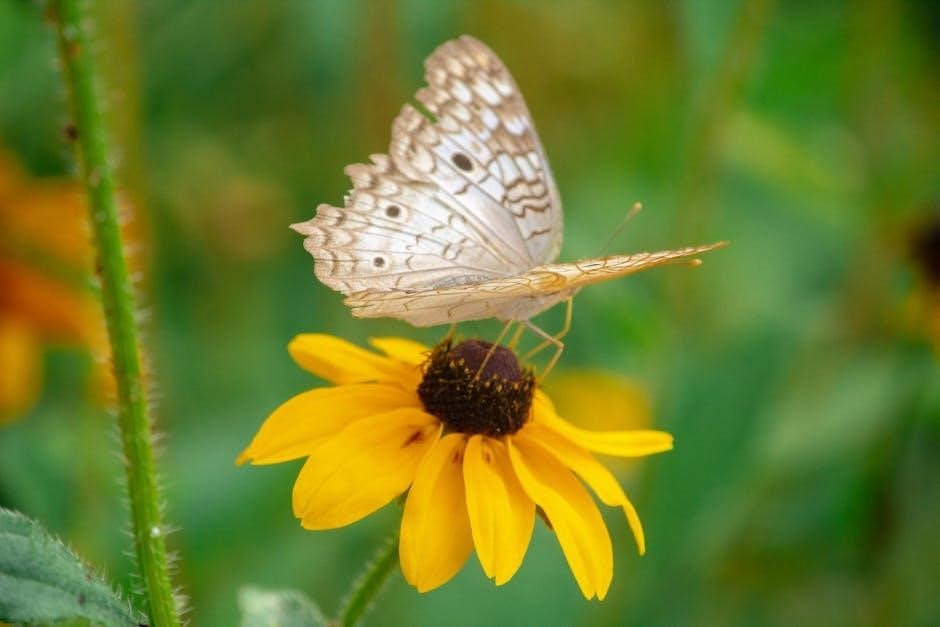
Uses for Felt Flowers
Felt flowers are versatile and beautiful, perfect for creating bouquets, embellishing clothing, crafting wreaths, making hair clips, and adding charm to home decor projects.
Bouquets and Arrangements
Felt flower bouquets and arrangements are a stunning way to add color and texture to any space. They can be designed to mimic real blooms, with intricate details and lifelike petals. By combining different flower styles, such as roses, daisies, and hydrangeas, you can create a unique and personalized bouquet. To craft a realistic arrangement, attach stems to each flower and secure them in a base or vase. Use floral tape or hot glue to hold the stems in place, and shape the arrangement for a natural, flowing look. Mixing colors and textures enhances the visual appeal, making felt bouquets a charming alternative to fresh flowers.
Embellishing Clothing and Accessories
Felt flowers add a charming, handcrafted touch to clothing and accessories. They can be used to create decorative brooches, adorn hair clips, or embellish bags and shoes. Sewing or gluing flowers onto fabric creates unique, eye-catching designs. Felt’s durability makes it ideal for wearable art, ensuring long-lasting beauty. Experiment with different colors and sizes to match your personal style. Whether it’s a delicate daisy on a headband or a bold peony on a jacket, felt flowers bring a touch of elegance and individuality to any accessory or garment.
Crafting Home Decor
Felt flowers bring warmth and elegance to home decor. Use them to create vibrant wreaths, garlands, or centerpiece arrangements. Their durability and versatility make them perfect for seasonal decorations or year-round displays. Attach flowers to fabric, baskets, or frames for unique wall art. Felt blooms can also adorn lampshades, cushions, or table settings, adding a handmade touch. They’re ideal for crafting cohesive themes, from rustic to modern designs, and can be customized to match any color scheme or style, making them a charming addition to any room.
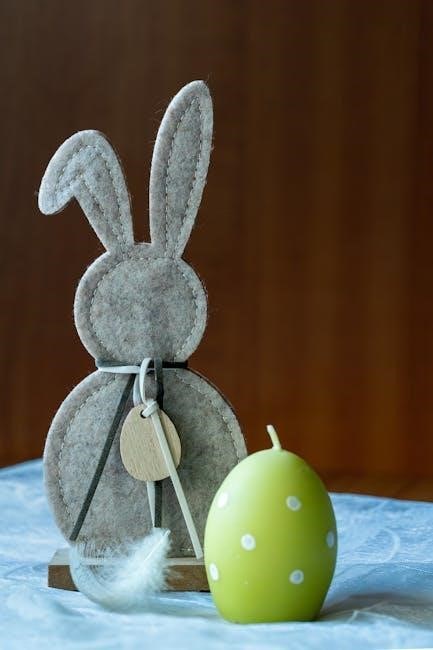
Resources and Further Learning
Explore online tutorials, video guides, and Cricut Design Space for digital templates. Etsy shops offer PDF and SVG patterns, while crafting communities provide support and inspiration for learning.
Recommended Tutorials and Videos
Recommended Tutorials and Videos
For mastering felt flower crafting, explore YouTube tutorials and video guides that demonstrate step-by-step techniques. Cricut Design Space offers digital templates for precise cuts, while Etsy shops provide downloadable PDF and SVG patterns. Many crafting blogs share free tutorials, from basic rolled flowers to intricate layered petals. Beginners can start with simple projects like felt daisies or roses, while advanced crafters can explore realistic shading and dimension techniques. These resources, along with online crafting communities, offer endless inspiration and support for creating beautiful felt flowers.
Printable Patterns and Templates
Printable Patterns and Templates
Enhance your felt flower crafting with printable patterns and templates available online. Etsy shops offer downloadable PDF and SVG designs, suitable for various flower types. Cricut users can find 3D flower templates in Design Space for precise cuts. Many crafting blogs provide free templates for projects like roses, daisies, and peonies. These resources help create consistent shapes and sizes, ensuring professional-looking results. Whether you’re a beginner or advanced crafter, printable patterns streamline the process, allowing you to focus on assembly and customization for unique, handmade blooms.
